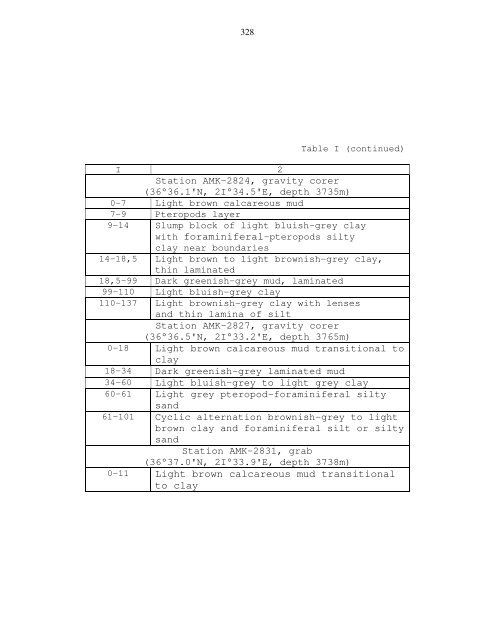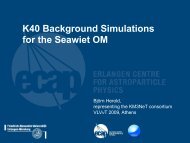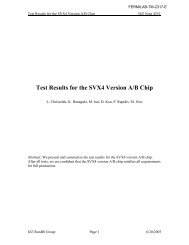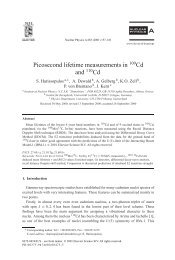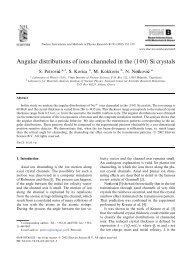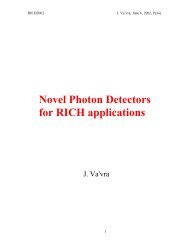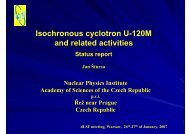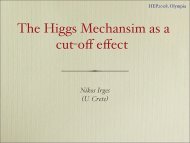Geomorphology and bottom sediments of the Pylos area
Geomorphology and bottom sediments of the Pylos area
Geomorphology and bottom sediments of the Pylos area
Create successful ePaper yourself
Turn your PDF publications into a flip-book with our unique Google optimized e-Paper software.
328<br />
Table I (continued)<br />
I 2<br />
Station AMK-2824, gravity corer<br />
(36°36.1'N, 2I°34.5'E, depth 3735m)<br />
0-7 Light brown calcareous mud<br />
7-9 Pteropods layer<br />
9-14 Slump block <strong>of</strong> light bluish-grey clay<br />
with foraminiferal-pteropods silty<br />
clay near boundaries<br />
14-18,5 Light brown to light brownish-grey clay,<br />
thin laminated<br />
18,5-99 Dark greenish-grey mud, laminated<br />
99-110 Light bluish-grey clay<br />
110-137 Light brownish-grey clay with lenses<br />
<strong>and</strong> thin lamina <strong>of</strong> silt<br />
Station AMK-2827, gravity corer<br />
(36°36.5'N, 2I°33.2'E, depth 3765m)<br />
0-18 Light brown calcareous mud transitional to<br />
clay<br />
18-34 Dark greenish-grey laminated mud<br />
34-60 Light bluish-grey to light grey clay<br />
60-61 Light grey pteropod-foraminiferal silty<br />
s<strong>and</strong><br />
61-101 Cyclic alternation brownish-grey to light<br />
brown clay <strong>and</strong> foraminiferal silt or silty<br />
s<strong>and</strong><br />
Station AMK-2831, grab<br />
(36°37.0'N, 2I°33.9'E, depth 3738m)<br />
0-11 Light brown calcareous mud transitional<br />
to clay


